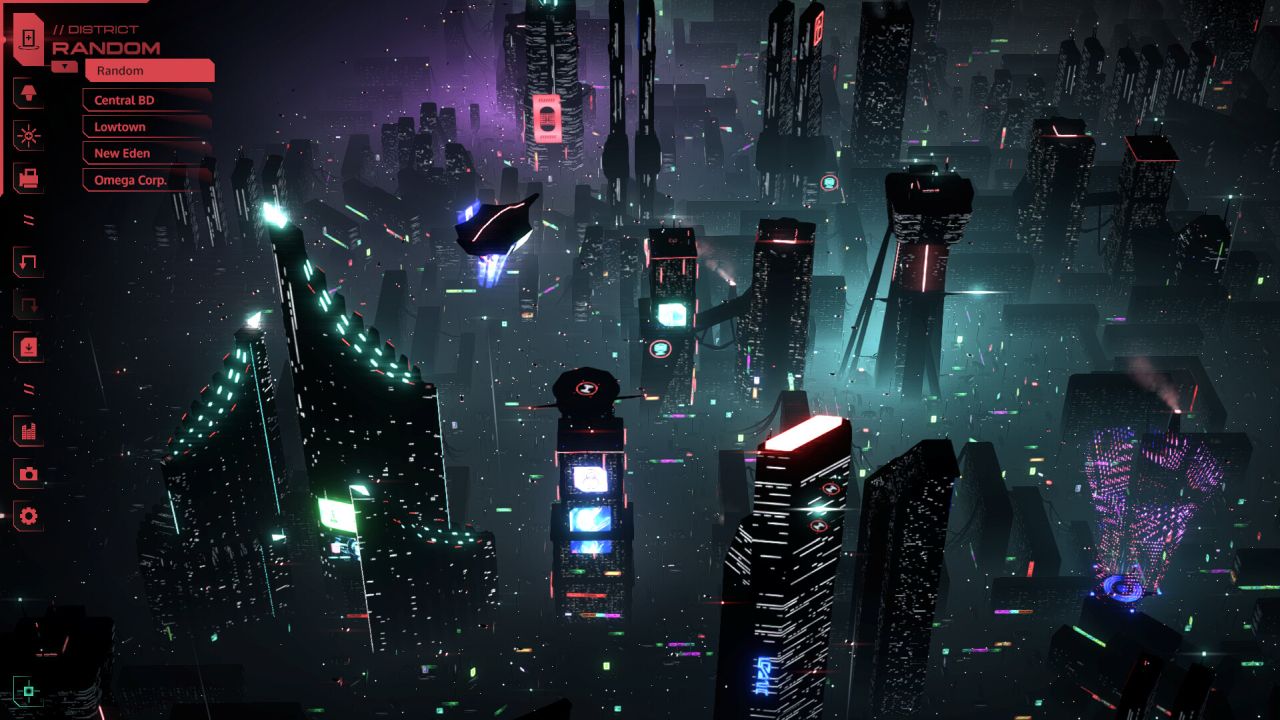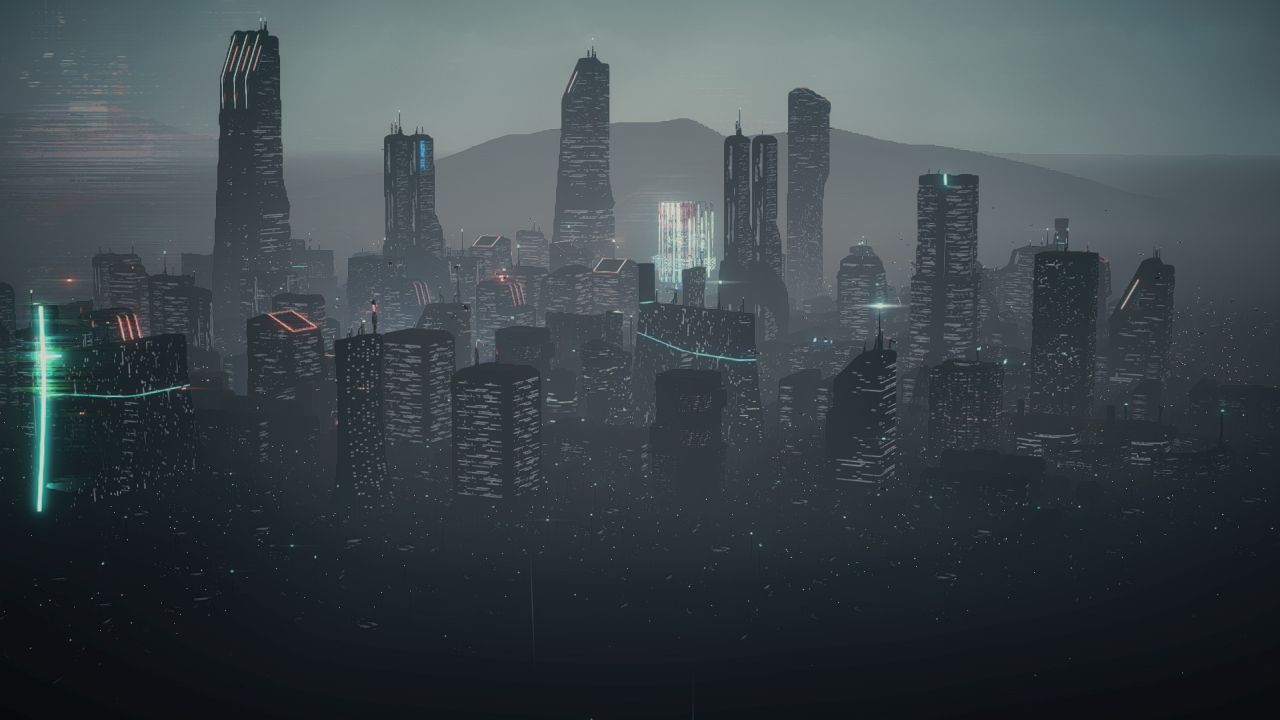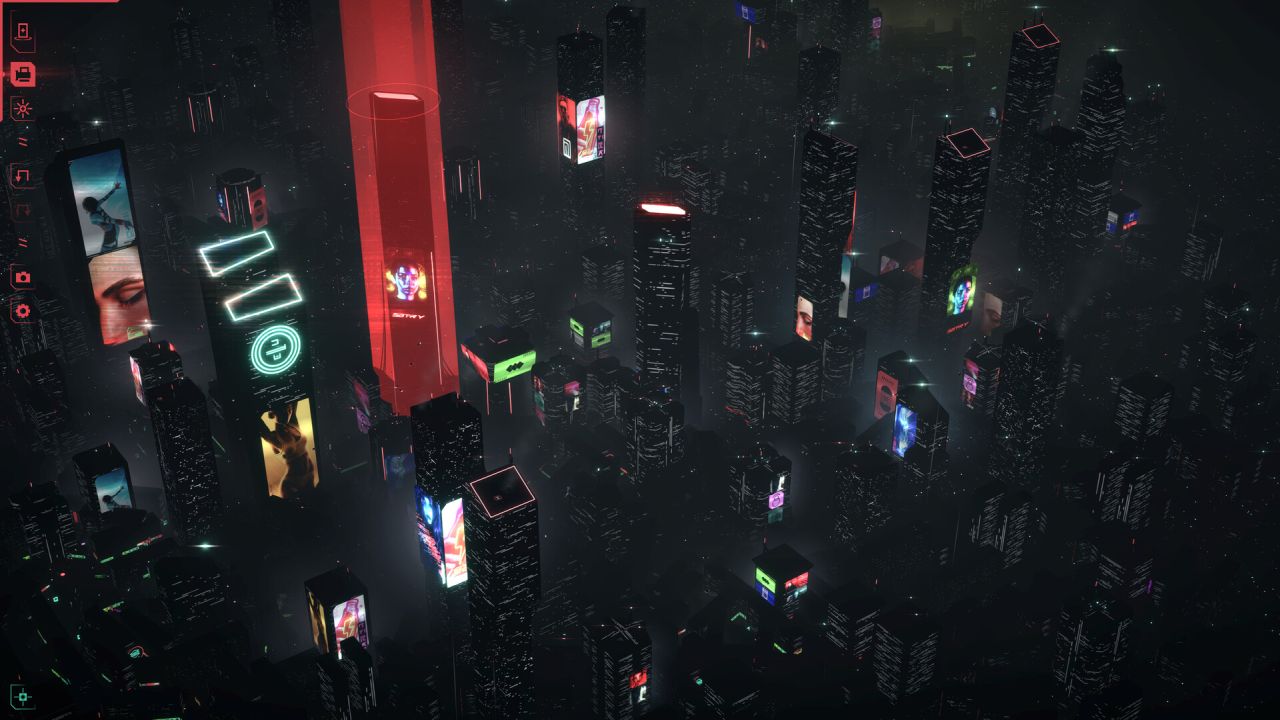Dystopika Review
A cyberpunk canvas
A couple of decades ago, the management genre was thriving on PC. From Tropico to Sim City, players were spoiled for choice of games that let them run a virtual town in some form. The genre isn't as strong now, but there are still options, such as Cities Skylines, Anno, Surviving Mars, and others. A variety of different styles and settings could also be found – from historical to modern day, and into space and the future. If you've enjoyed these games, you will probably know that they require time and effort from the players, to create bustling cities that thrive, and eventually look good, too. But what if you wanted something extremely casual, where the visual outcome was the only thing that mattered – and indeed, the only thing that was offered to the players. That's the interesting spot that Dystopika finds itself in.

Dystopika is straightforward about its intentions. Some would say it is barely a game – there are no objectives, no outcomes, no wins or losses; nothing at all really to work towards except creating a cyberpunk city that you enjoy the look of. It's a free-building sandbox, and for the price of $7, it delivers on that and not much else.
Players are simply given a plot of land with a randomly generated mountainous background, onto which you can start placing buildings. The plot of land is of decent size, but the playable area does have limits. From the typical isometric camera, which can be zoomed, rotated, and adjusted, you click to place buildings, and a few smaller background ones are generated around it, to make it feel a little more natural. There are three groups of structures that can be placed; lower-rise, high rise, and somewhat unique/mixed. They are only different purely based on their visual style, and any building can be placed anywhere, as long as they don't overlap.
You can right click to scroll through the available buildings before placing them. A minor criticism is that there are not very many different building shapes, though at a birds-eye view, that's probably fine. The two "Corporation" building groups have just one building, which is a bit strange. As you plop down structure after structure, you can choose to group them into areas of the city, or just leave the building tool on random mode. To add a little more interactivity, buildings can be deleted, but sadly not moved. You can also rotate the buildings you've placed, and also click to raise some of them higher, to become towering skyscrapers. The game could have used an editor cursor – because you adjust existing buildings and place new ones in the same mode, so you can potentially miss-click and place a building you didn't intend. You do have a dedicated delete mode for demolishing structures.

Once you got a bunch of towers in place, you can start adding decorations. There are two options – a paintbrush-like tool that you just drag over areas and it lights up many signs and windows in the buildings, or manually placing objects. The manual decorations are mostly LED signs that feature either cryptic symbols, or you can place signs with custom text of your choice which is neat. Signs can be stuck anywhere on the sides of structures.
To add a slight bit of gameplay progress, after placing lots of buildings, you randomly begin to unlock more decorations, such as additional signs, helipads, as well as holograms. These hologram projections can be either giant advertising screens, or figures of humans or animals. Once unlocked, you can place more of them across the city and choose what they display. We did run into an issue with these unlock systems however, as they did not seem to carry over successfully into new cities and across different save files.
The game is all about visual style, so there are options that let you adjust the time of day, and enable rain or fog to really drive the cyberpunk dystopia mood. A photo mode is included, with a variety of tweaks to make the city pop a bit more. You can even do a cinematic camera sweep between two manually selected points. From a distance, the finished cities do feel somewhat engrossing and give the aesthetic a bit of atmosphere. Looking too closely may reveal the game's highly limited visuals though, as the environment doesn't have much life to it. Some lights flicker and the holograms can be animated, and there are also lots of random flying cars, but it still feels a bit static. You can't really see the city streets, so it's left up to your imagination. The audio is also a bit weak, offering just two very basic music tracks and some ambient effects.

Given the game's abstract visuals, it performs without issues, but with a few shortcomings. For instance, the only options are an FPS target and resolution though. The first city that you create upon launching the game isn't actually possible to save and reload later – unless we missed something – as you have to venture into the menu and start a new city, so that it gets a save file that can be later selected in the menu. As mentioned, the decoration unlocks don't seem to carry over between different save files. While the flying cars add a little life, there are many of them – so many that it often looks like a swarm of angry bees, and they cannot be hidden in photo mode. The game also has a very strange filter that is almost like a background image, and it visibly protrudes through photos. It seems to be possible to hide by changing one of the visual effect settings.
If you enjoy painting – an activity that is inherently all about creating something for yourself, and to perhaps share with others once completed, with no limits or goals or motivations other than idyllic way to spend time – then Dystopika could be for you. At $7, it only offers a minimal experience, but some may find themselves enjoying a little or a lot of time with it. There are a few things that could have been improved – from a technical design and content perspective – but for the right price, it's a slice of an experience that will be a good fit for a very specific type of audience.
 Comments
Comments











